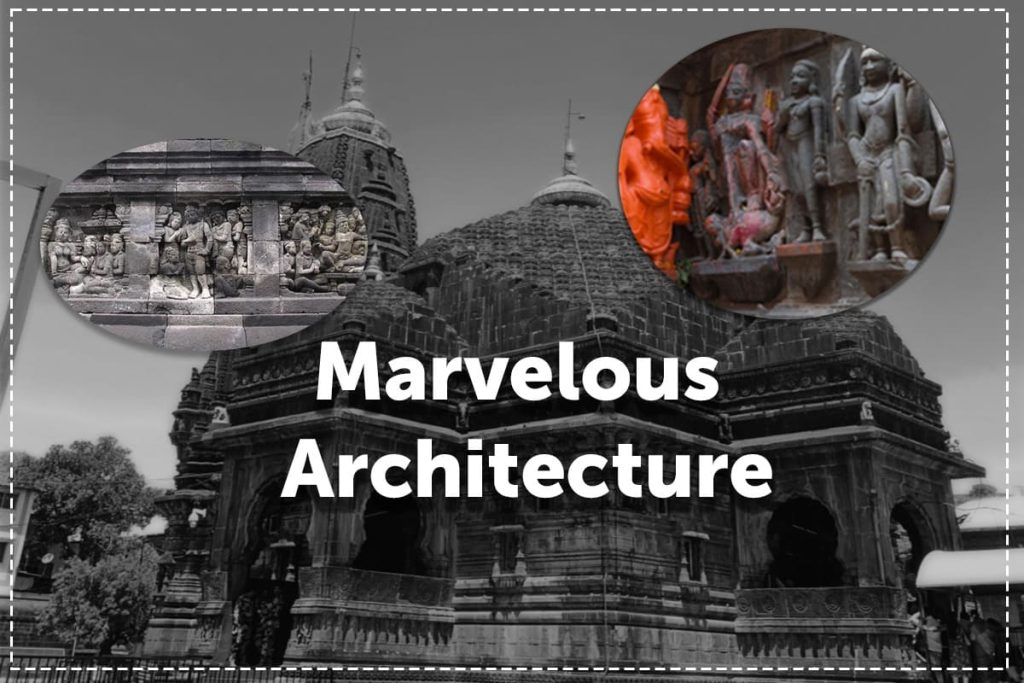
Maharashtra is home to the Trimbakeshwar Temple, one of the most revered sites in all of India. This medieval temple, which is devoted to Lord Shiva and is located close to Nashik on the foothills of the Brahmagiri Mountains, is extremely significant both religiously and historically. The temple has a long and illustrious history that dates back several centuries, and millions of devotees from India and other countries travel there on pilgrimage. This blog will examine the origins, architectural beauty, and cultural and religious customs that have made the Trimbakeshwar Jyotirlinga Mandir a timeless symbol of faith and devotion. It will also explore the history, theology, and mythology surrounding the temple.
Origin in History
There are parallels between mythological and historical narratives in the Trimbakeshwar Temple’s history. Nana Saheb Peshwa, the Maratha emperor, is credited with building it in the eighteenth century. Its roots, however, are far older and are rooted in Hindu literature and traditions. The continuous tradition of the Kumbh Mela, a prominent Hindu pilgrimage conducted in Nashik every 12 years, is one of the most important historical events connected to the museum.
The Godavari River is said to have its origins at the holy Trimbak Tirtha, from which the temple gets its name. In Hinduism, this river—often called the Ganges of the South—has great spiritual significance. Ancient literature claims that during their 14-year banishment, Lord Rama, his brother Lakshmana, and wife Sita resided in Trimbakeshwar.
Historical Significance
Hindu beliefs and traditions form the foundation of the mythology surrounding the Trimbakeshwar Jyotirlinga Mandir. The Godavari River’s genesis is one of the most well-known legends associated with the temple. The temple is devoted to Lord Shiva because, according to the ancient text known as the “Shiv Purana,” he lived in Trimbak. According to local belief, Lord Shiva caused the holy Ganga, also called Godavari, to flow from the Brahmagiri Mountains. The goal of this deed was to save many souls and purify the earth.
Every year, the Shravan Shivratri celebration honors this momentous occasion by bringing people together to wash their sins and seek blessings through a holy plunge in the Godavari River. Because Hindus believe that the river’s source is holy, Trimbakeshwar is a sacred site where they conduct religious ceremonies and ancestral rites.
Marvelous architecture
With its exquisite stone carvings, exquisite sculptures, and ancient Nagara-style shikara (spire), the Trimbakeshwar Jyotirlinga Mandir is a magnificent example of classical Hindu temple architecture. The temple’s construction showcases the magnificence of traditional Hindu workmanship and is a monument to the technical prowess of that bygone age.

The majority of the black stone used to build the temple is covered in carvings that represent numerous gods and legendary characters. The Mahadwara, the grand gateway, is a striking building with elaborate carvings and elaborate ornamentation. The temple’s spiritual center is the sanctum sanctorum, which houses the revered Shiva Linga. There are circumambulatory routes all around it where devotees can stroll and offer prayers. The temple’s spiritual importance and stunning architecture continue to draw pilgrims and visitors.
Religious Activities
Numerous religious rites and customs are centered in the Trimbakeshwar Jyotirlinga Mandir. The temple is frequented by visitors who come to engage in customary prayer rituals known as pujas, provide ritual bathings known as abhishekams, and take part in the daily aarti, which is a ceremonial worship including lights and incense.
During important Hindu holidays like Maha Shivaratri, Shravan Shivratri, and Karthik Purnima, the temple also has unique rituals and celebrations.
An important part of the temple’s liturgical calendar is the Kumbh Mela, one of the biggest religious gatherings in the world. The city of Nashik becomes the focal point of this enormous event once every twelve years. Seeking spiritual cleanliness and salvation, devotees from all over India and outside congregate to partake in a ceremonial bath in the Godavari River.
A significant hub for Kumbh Mela festivities is the Trimbakeshwar Temple, where millions of people gather to take part in this auspicious occasion.
Spiritual Importance
In Hinduism, the Trimbakeshwar Jyotirlinga Mandir has great spiritual importance. It’s regarded as one of the twelve Jyotirlingas, hallowed sanctuaries devoted to Lord Shiva. Translating to “the radiant sign of the Almighty,” each Jyotirlinga temple represents the divine and all-pervasive essence of Lord Shiva. As a pillar of light, the Trimbakeshwar Jyotirlinga symbolizes Lord Shiva in his elemental form.
The temple is also linked to the notion that coming here to pray can free oneself from the cycle of life and death (samsara) and cleanse oneself of sins. Devotees travel to Trimbakeshwar in search of spiritual advice, blessings, and answers to their concerns. An atmosphere of profound dedication and introspection is fostered by the holiness of the temple and its surroundings.
Preservation and Conservation
The Trimbakeshwar Temple has seen many hardships throughout the ages, such as deterioration, time, and natural calamities. To protect the historical and architectural legacy of the temple, conservation measures have been made. The structural soundness and aesthetic appeal of the temple have been preserved by a number of repair and remodeling initiatives.
The temple has been carefully guarded by the Archaeological Survey of India and other state organizations. Ensuring that future generations can continue to behold the majesty of this hallowed location and sense its spiritual importance is contingent upon these efforts.
Conclusion
The Trimbakeshwar Temple is a storehouse of mythology, spirituality, and history in addition to being a site of prayer. It is a representation of India’s rich religious and cultural legacy because of its legendary stories, ancient origins, and stunning architecture. The temple is an essential component of India’s religious landscape, drawing millions of pilgrims and visitors during its yearly festivals and the Kumbh Mela.
Trimbakeshwar is a hub of faith and devotion that has gone beyond religious bounds to become a gathering place for people to seek spiritual enlightenment and comfort from a variety of backgrounds. Its status as one among the 12 Jyotirlingas and its significance to Hinduism reinforce its status as a hallowed site of worship.
The Trimbakeshwar Temple is a living example of the continuing strength of spirituality and religion, as well as a tribute to the past. Its persistence and the love it arouses serve as a poignant reminder of the deep and enduring influence of antiquated customs on contemporary society.


